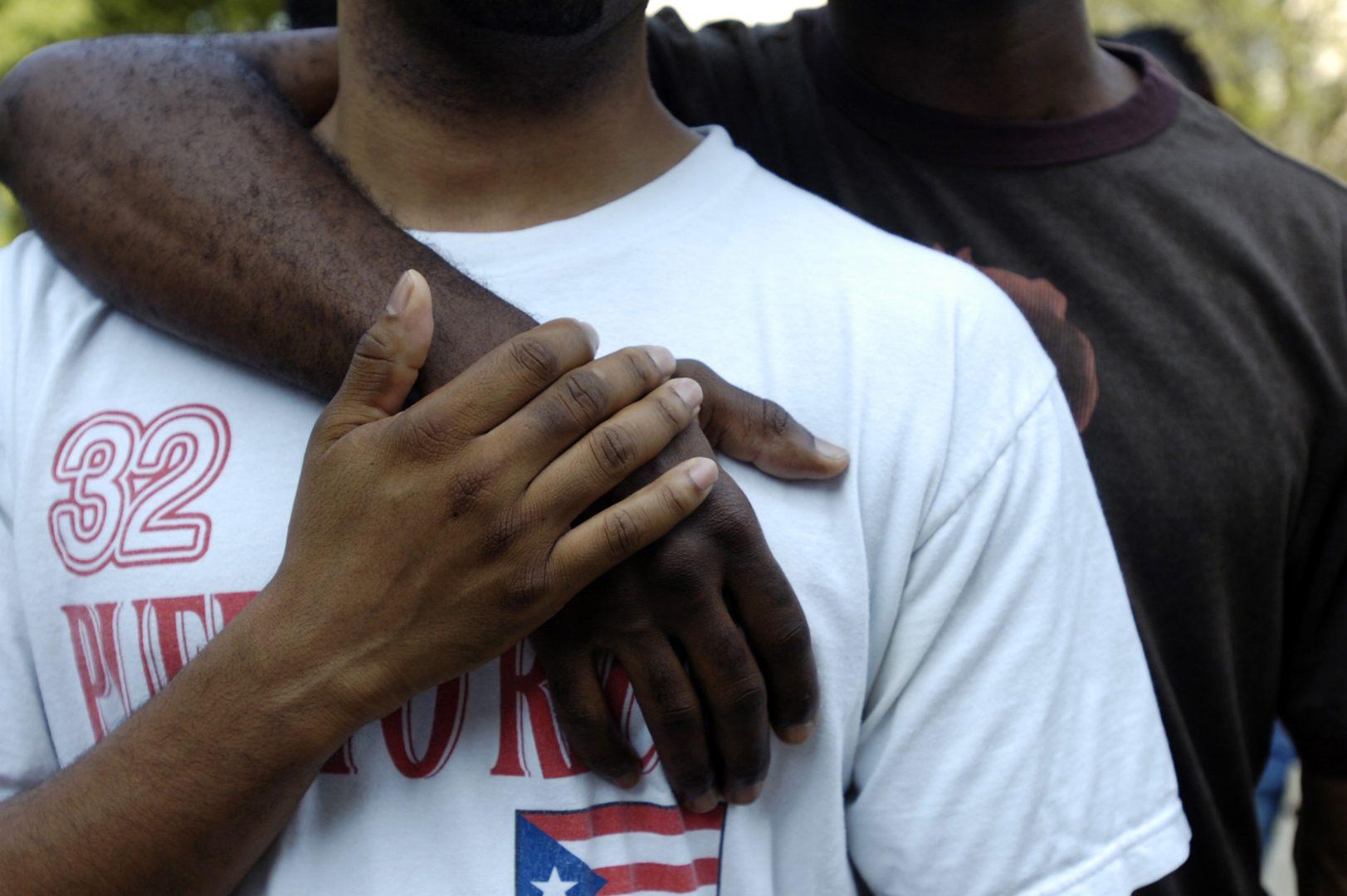HIV Rises in Young Gay Males
Experts Fear ‘Another Wave of Death’ Among Hispanic and Black Men
June 1, 2011

Published: January 31, 2008
FCLC—“Get high. Get stupid. Get AIDS.”
So went the commercial that inspired 40-year-old Tom*, an black HIV-positive male from the Bronx, to get an AIDS test in 1996. “I knew I was in the risk group. I was getting high, getting drunk, and I was getting stupid and [having unprotected sex],” he said at the Momentum Soup Kitchen for individuals with HIV/AIDS.
“Where I lived [in the Bronx], everyone was doing it during [the late 1980s]. We didn’t have the education. You walk down the street at 2 a.m., a girl is waving at you, and you can hit it and quit it right there for $10 and a bag of crack. We weren’t using protection for that,” he said. “You just weren’t going to stop the moment and look for a condom.”
The risky behaviors that Tom described, in both gay and straight individuals, were contributing factors to the NYC AIDS epidemic of the 1980s. Statistics indicate that despite the heightened profile of HIV/AIDS, NYC’s young gay men are still engaging in the same risky behaviors and contracting HIV at increasingly alarming rates.
Since 2001, the rate of new HIV infections among Manhattan men under 30 who have sex with men has increased by 57 percent, according to the New York City Department of Health and Mental Hygiene (DOHMH).
In addition, the Web site reported that the rate of infection in Hispanic and black men who have sex with men (MSM) has increased 34 percent since 2001—an especially “striking number,” considering that Hispanic and black MSM already accounted for the great majority of new HIV diagnoses. The Web site states that in 2006, almost 90 percent of MSM diagnosed with HIV in New York City were Hispanic or black. Experts blame lack of education, cultural attitudes toward homosexuality and drug use as the causes of this increase.
 “Young people are thinking ‘it won’t happen to me,’” said Monica Rivera Mindt, a clinical neuropsychologist and assistant professor of psychology at Fordham College at Lincoln Center (FCLC). “They haven’t seen friends dying of AIDS…people walking around with lesions…like the [previous generation did].” During her research with HIV-positive individuals at Mount Sinai Medical Center, she remembered one patient displaying what a recent New York Times article termed “treatment optimism.”
“Young people are thinking ‘it won’t happen to me,’” said Monica Rivera Mindt, a clinical neuropsychologist and assistant professor of psychology at Fordham College at Lincoln Center (FCLC). “They haven’t seen friends dying of AIDS…people walking around with lesions…like the [previous generation did].” During her research with HIV-positive individuals at Mount Sinai Medical Center, she remembered one patient displaying what a recent New York Times article termed “treatment optimism.”
“[The patient] said, ‘now the treatments are so much better, so even if I get it, it doesn’t matter,’” Rivera Mindt recalled. “The treatments are significantly better, but it can still kill you! That was so sad to hear,”
she said.
Rivera Mindt said she attributes the specific rise of HIV infection in young, Hispanic and black MSM to the “patriarchy and machismo” inherent in these cultures that sometimes prevents young gay men from admitting that they are homosexual.
“Some African-American men won’t say they’re gay—‘I have sex with men, but I’m not gay.’ There is a shame associated with [homosexuality], a lack of acceptance,” Rivera Mindt said. “If they aren’t willing to admit that they are gay, they are talking about it less…they are probably less aware, and they aren’t taking the appropriate precautions.”
Being “on the down low,” or on the DL, is a term used in the African-American community. “On the down low” refers to a man who looks and acts straight, has sex with women or is in a relationship with a woman but secretly also has sex with men, according to a 2003 New York Times article.
A Craigslist search reveals copious personal ads placed in the New York City area by “straight-acting DL guys,” or “homo thugs,” looking for men to have sex with.
“In the African-American community, men are placed with a lot of pressure to be dominant and strong,” said Cerise Adams, FCLC ’09, who conducted research on HIV patients at the SUNY Downstate Medical Center in Brooklyn alongside Jayashree Ravishankar, a doctor who specializes in infectious diseases. A large number of black men, according to Adams, “[feel that] they have to keep [their homosexuality] confidential in order to remain respected by their peers and family members.”
Black MSM “rarely use condoms, and can act as an infectious bridge, spreading HIV to unsuspecting wives and girlfriends,” according to The New York Times Magazine, as cited by New York City HIV/AIDS organization The Body.
“[A lot of] black men don’t use protection. Some black women go along with it because they don’t want [their men] to leave them… Some women suspect men are on the down low but they don’t have any solid proof,” added Shannell Beckles, FCLC ’09, who is African-American.
Almost two-thirds of women diagnosed with HIV in 2001 were black, according to The New York Times. Many believe that this is partially the result of black men being “on the down low,” the article reported.
“There are a lot of thug gay guys…some Hispanic guys are also definitely ‘on the down low’ too,” said Michael Lazo, FCLC ’09, an executive board member of FCLC’s Student Organization of Latinos (SOL) and editor-in-chief of SOL’s news publication, Dimelo.
Lazo, who considers himself bisexual, also said that homosexuality is a “big taboo” in the Hispanic culture because “it is a culture based on Catholicism.”
Regardless of race or religion, it appears as though young men are still getting high, getting stupid and getting AIDS. According to research conducted by Perry Halkitis, professor of applied psychology at NYU, there has been an “alarming growth in club drug use among gay and bisexual men in New York City.” Halkitis also stated that “club drug use is fueling risky sexual behavior and damaging the health of a population already vulnerable to sexually transmitted diseases.” The most popular drugs, according to the research, are ecstasy, cocaine, crystal meth and GHB.
How to stop the increasing rate of HIV infection? According to Rivera Mindt, culturally-centered education is the key. “It would be difficult to change [African-American and Hispanic] culture and beliefs regarding homosexuality—health educators may not make as much of an impact in this regard. [It would be more effective] to get information to these communities in ways that are culturally tailored, using materials and language that are culturally acceptable.”
Our generation may not have experienced the first AIDS epidemic during the 1980s, but according to the DOHMH, if behavior patterns don’t change, we may experience the second AIDS epidemic—now.
New York City Health Commissioner Thomas R. Frieden said, “Unless young men reduce the number of partners they have and protect themselves and their partners by using condoms more consistently, we will face another wave of suffering and death from HIV and AIDS.”











